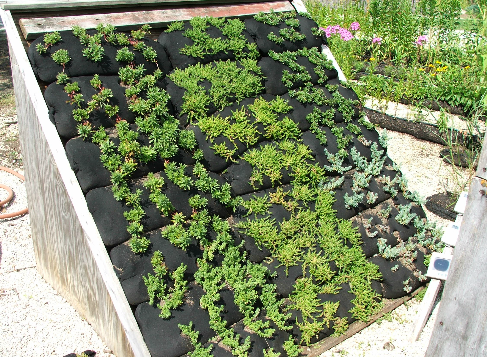Earthbag buildings have walls made of soil fitted in earthbags. These walls can easily be modified to accomodate for plant life to grow vertically.
For low rise, single and double storey houses, the earth bags can be arranged vertically in a tappering shape which provides stability and stacked vertically to self support.

For high rise buildings, a metal trelis can be constructed to support the growing wall.


Billboards.
Green walls can also be used as city bill boards where they soften the harsh concrete feel of the city.

The use of vertical gardens in walls goes a long way in ensuring that the green ecosystem is maintained. The building foot print covered by the floor is replicated along the walls , giving more space for plants to grow. Wall surfaces of a building are usually more than the floor plinth area, hence ideal places to cater for the lost green areas.
Vertical wall gardens also ensure food security since crops such as tomatoes can be grown on the walls to supplement food sources.
Vertical walls ensure that carbon dioxide is cleaned and removed from the air, reducing the green house effect and cleaning the air for a healthier life.
At a4architect.com, we offer green building solutions advisory to home owners and property developers.



http://www.elmich.com/elmich.sg/projects/landscape/0/7/197/NANJING%20SOUTH%20RAILWAY%20STATION/

California Academy of Sciences by Renzo Piano

GrinGrin Building for Island City Central Park, Fukuoka pref, Japan. Architect: Toyo Ito

Nanyang Technological University in Singapore

Vulcano Buono Nola Mall, Naples, Italy by Renzo Piano
Francis Gichuhi Kamau, Architect.
0721410684. info@a4architect.com


Leave a Reply